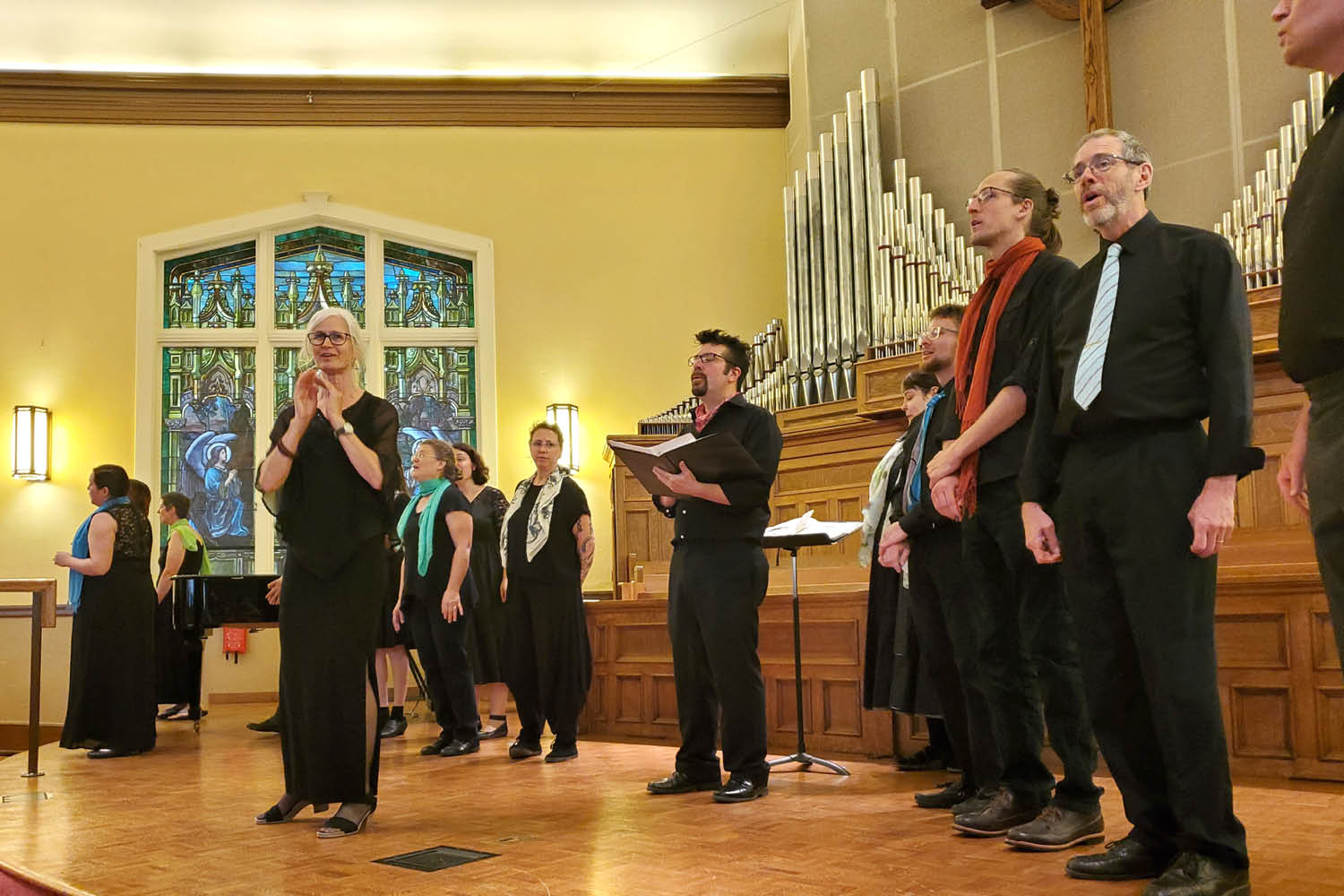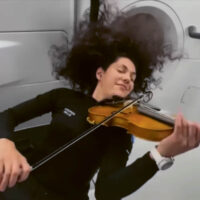Corvallis, Oregon. Julie Courtney is a Waldorf teacher, director of the Hazelwood Choir, and voice coach trained at the School of Uncovering the Voice With the Werbeck exercises, which were developed in collaboration with the opera singer Valborg Werbeck-Svärdström and Rudolf Steiner, she helps people to develop the full potential of their voice. An interview.
What has the journey with your own voice been like?
I’ve always loved to sing and harmonize but had no formal vocal training until I studied voice, composition, and conducting at Oregon State University at age 31. I simultaneously began training with Christiaan Boele in the School of Uncovering the Voice (UTV). It was challenging to be doing both, as the approaches are so different. I worried that the university voice lessons would bring too much vibrato into my voice, and I would not be able to control it. UTV has helped me to “widen” my voice, which is naturally clear but not rich.
In what ways is an “uncovered” voice different from a “covered” voice?
Uncovering, or freeing the voice is mostly about getting ourselves out of the way so we can connect with pure tones in the sound stream. It’s less about producing and more about uniting or merging with sound. We begin with vocal exercises to relax and forget the breath; which focus our attention on movements that foster healthy breathing. We then utilize exercises that use “liquid” consonants, like l, m, n, and ng, as well as brrr and rrrr to guide the sound through alternate pathways out of the body rather than the mouth. This creates a resonance that is lifted and enlivened away from the throat and sounds in the surrounding air.
How do the Werbeck-exercises shape the sound of the Hazelwood Ensemble?
Werbeck-exercises help us achieve a unified, blended sound. Hazelwood singers learn to listen to the whole and less to themselves. By over-shaping the face during exercises, such as singing a pure O with the lips shaped as when whistling, we feel how to shape the inside of the mouth to create a pure, rich tone. Later, we can reduce the facial movements. The vowel exercises help us to achieve a ringing tone and vowel matching, which also helps us keep in tune. In addition to the blended choral effect, I also like to provide ample opportunities for individual, solo voices to sound in our concerts.
More You Can Sing
Translation Charles Cross
Photo Woody Fitzgerald









